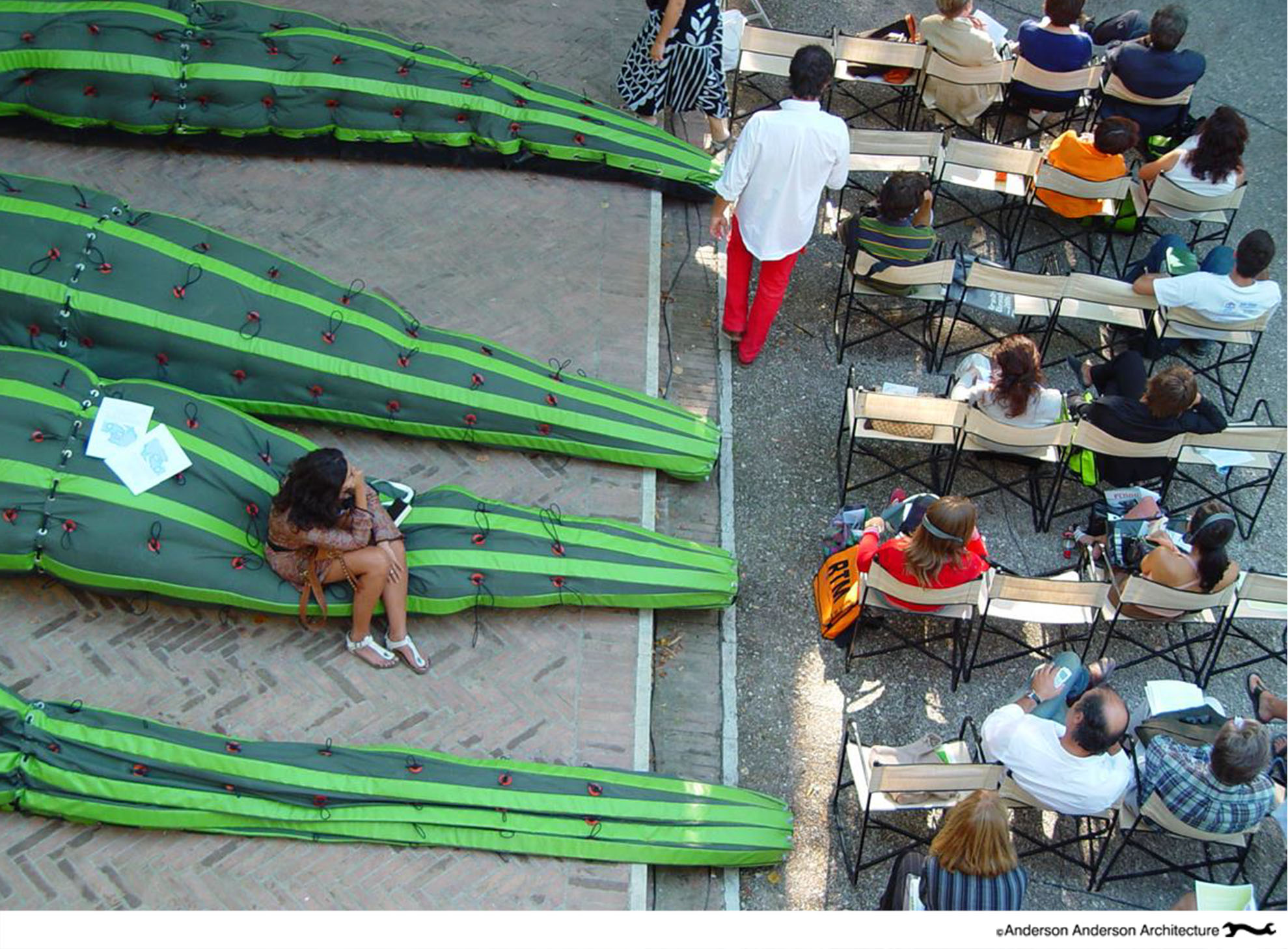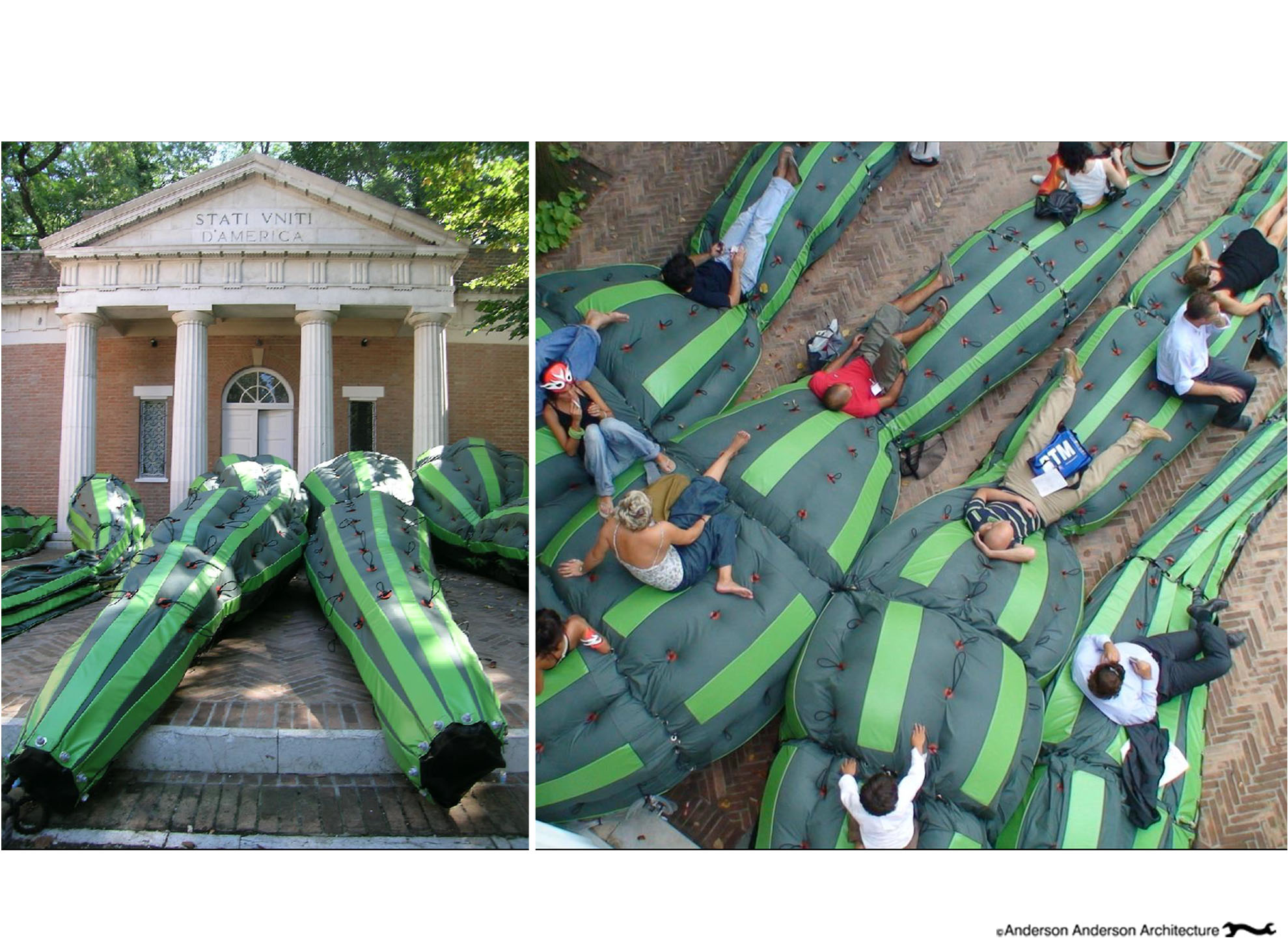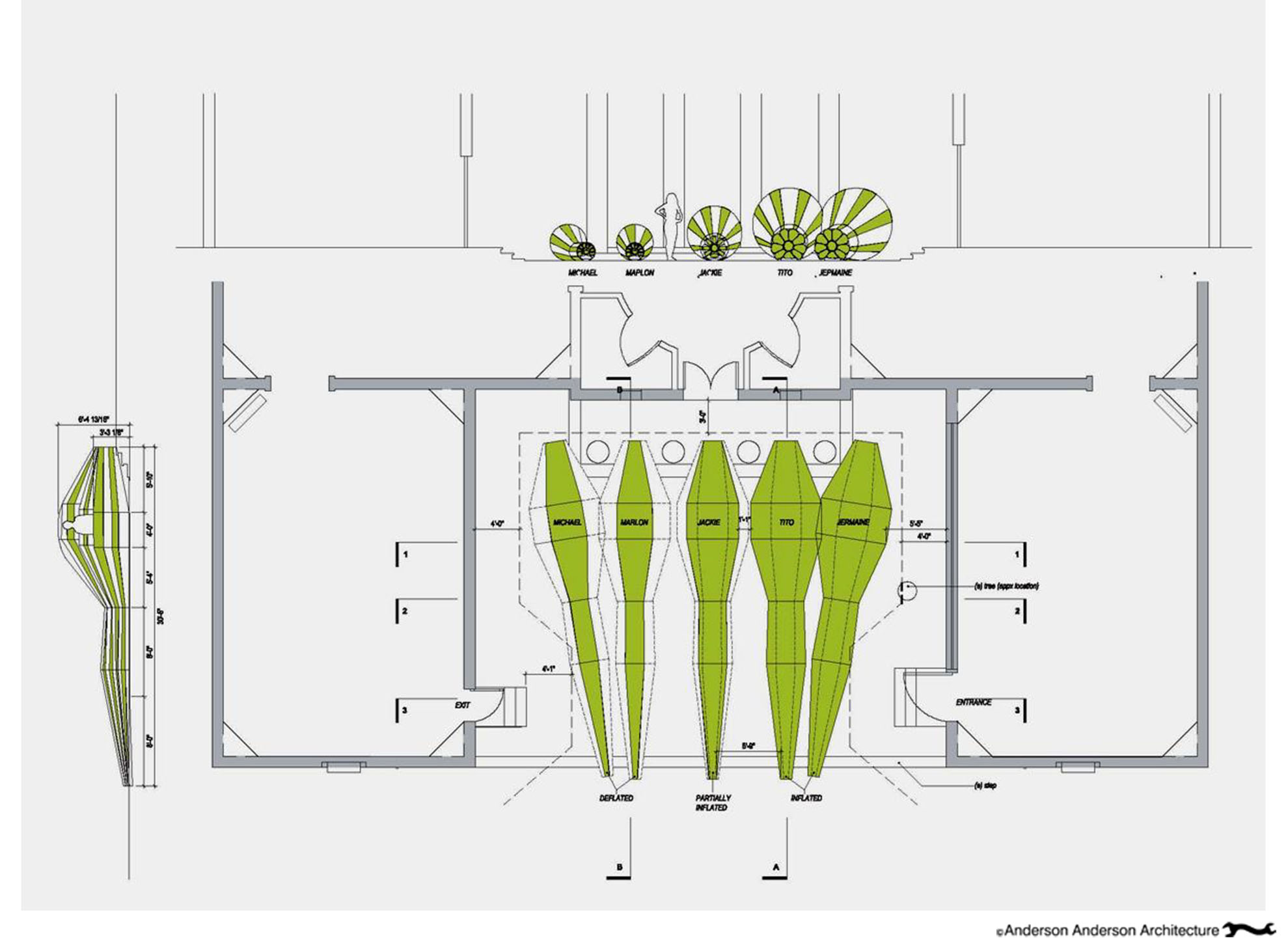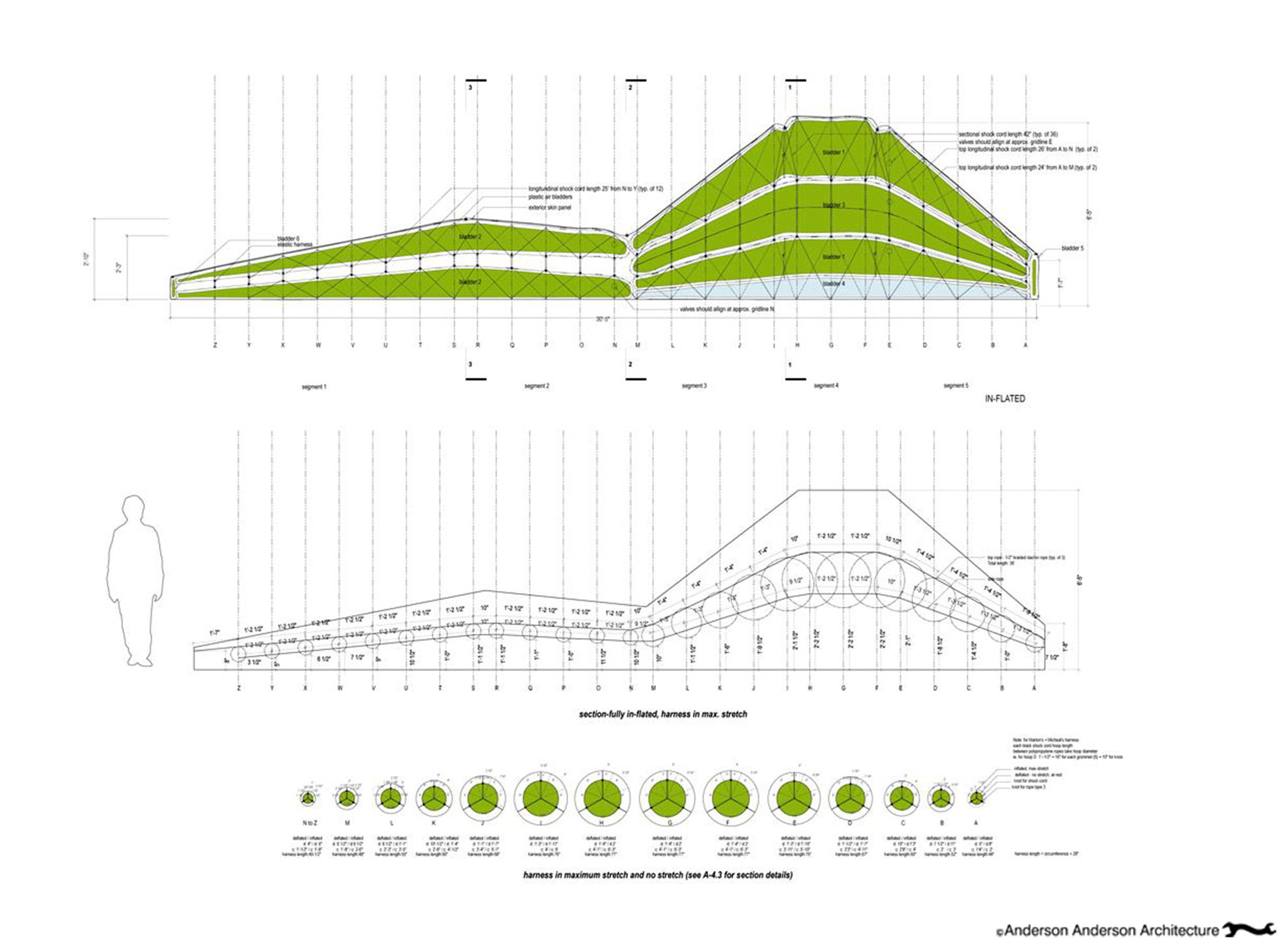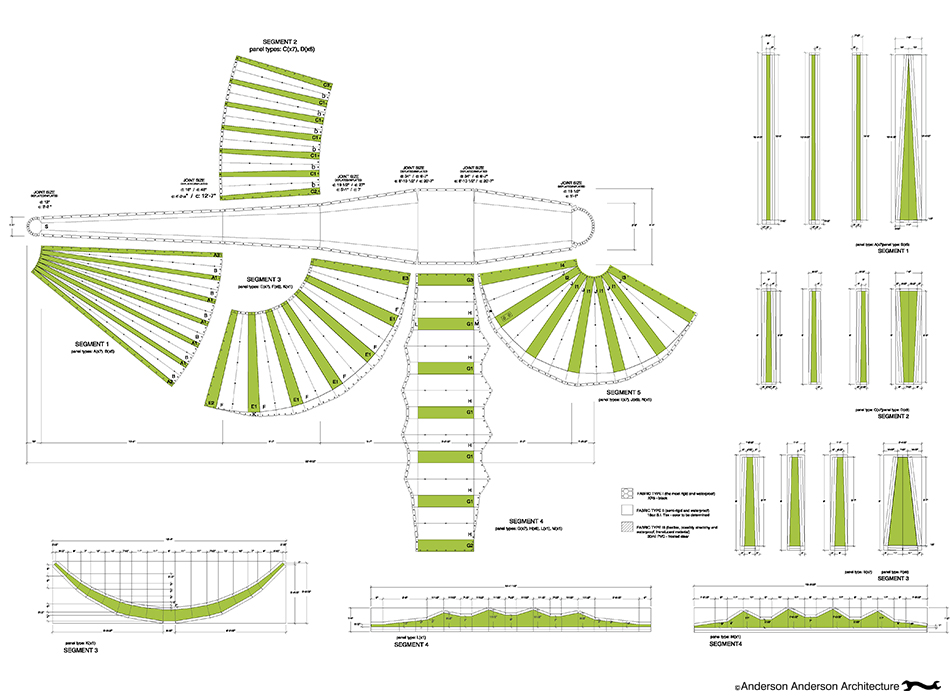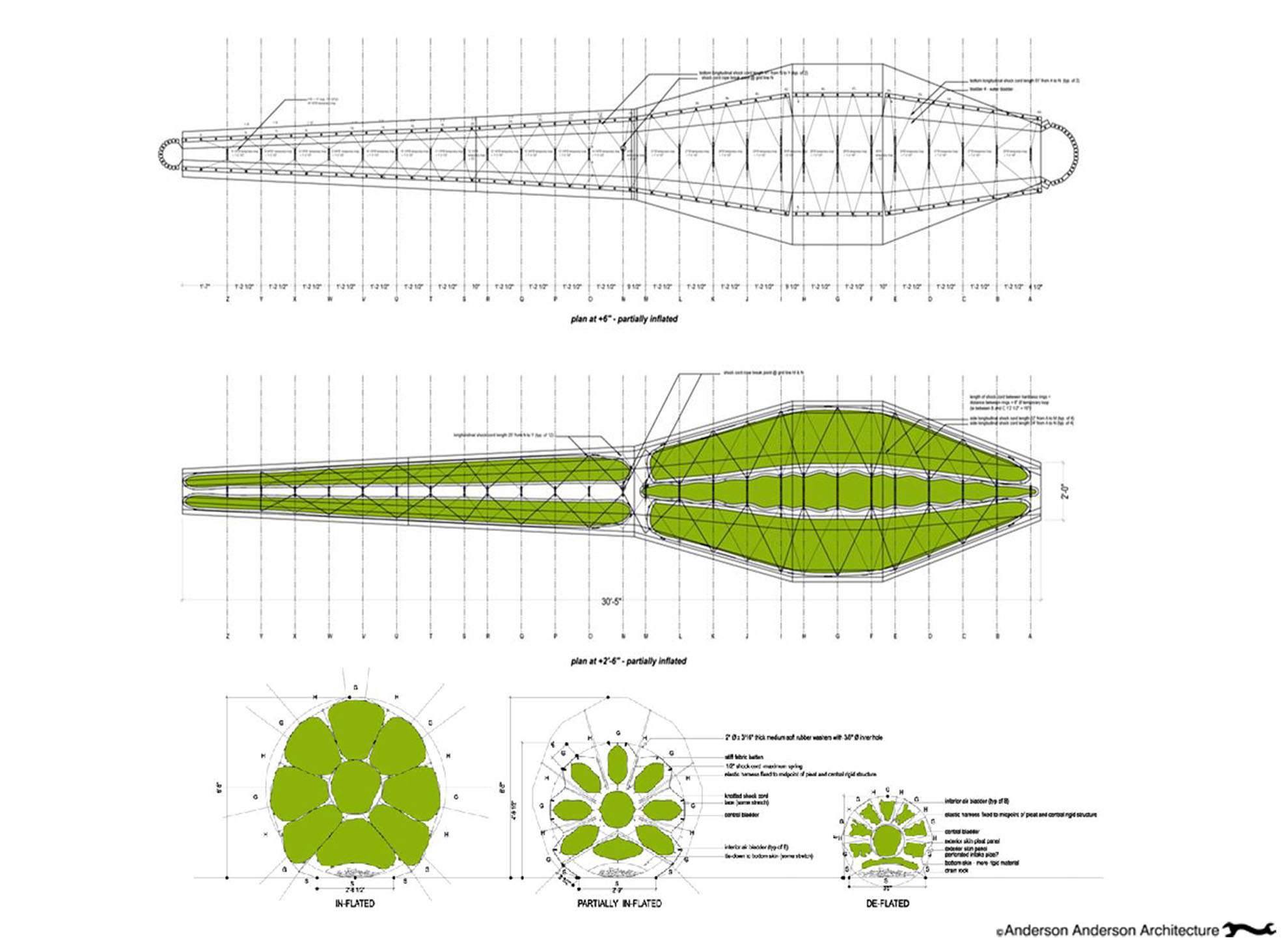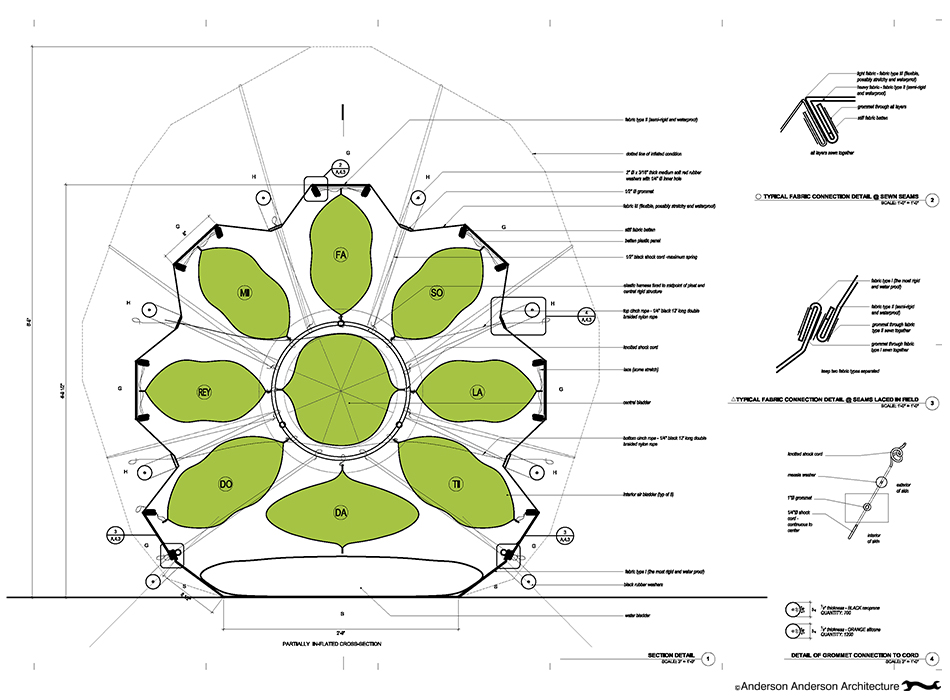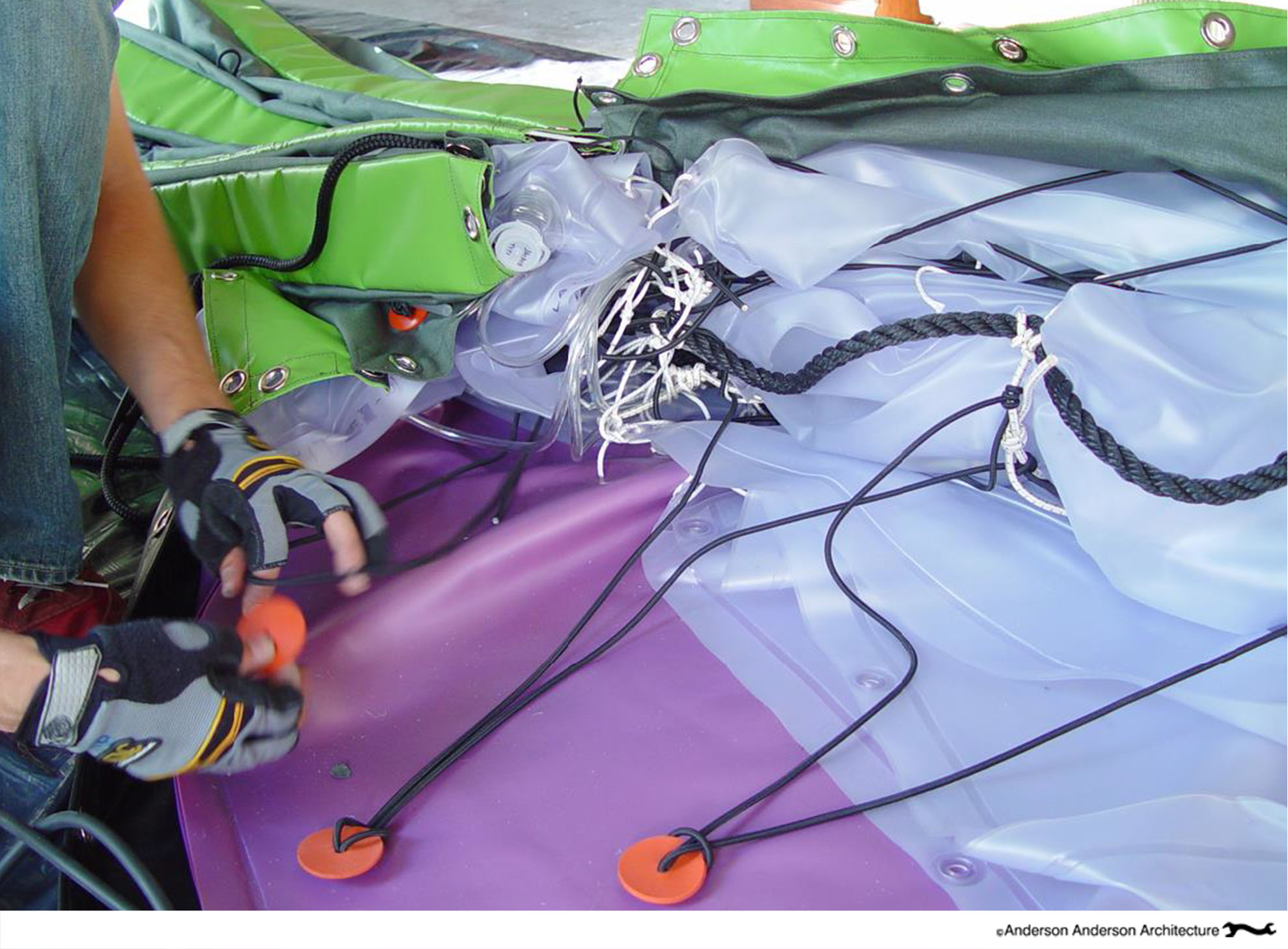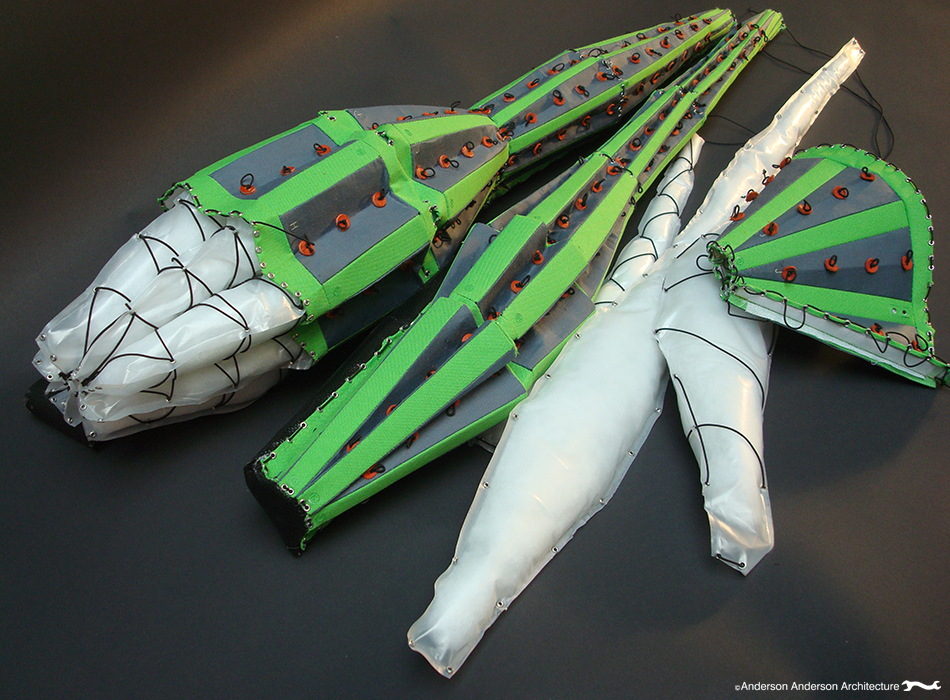ALLUVIAL SPONGE COMB
The Alluvial Sponge Comb is the waterfront landscape element of our design proposal for New Orleans, mediating between the natural ebband flow forces of water and the inhabitation of the site. The central design criteria for our building and landscape design focuses on adapting the human construction to harmonize with the cyclical flows and extremes of the natural site, absorbing and beneficially harnes singnature’s impact rather than resisting it. We feel that it is very important for the American Pavilion in Venice to not dwell on the disaster as an unfortunate freak occurrence of nature, but instead to focus on the opportunity to engage in design for alleviating a worldwide infrastructure concern, by proposing new modes of waterfront development that accommodate and celebrate natural extremes, avoiding human and ecological destruction with multi-functional systems that contribute to the quality of life each day rather than investing in single-purpose bulwarks that serve once in a lifetime yet stand as ungainly, inflexible and expensive barriers always inplace. New Orleans and Venice are both remarkable works of unnatural environmental construction that have developed intriguingly similar cultures of black humor artifice and cyclical festival that experientially mediates the difficult, dangerous, and uncertain environments that both sustain and threaten them. For the courtyard of the American pavilion at the Venice Biennale, we will install a sample portion of the alluvial sponge comb as outlined in the following pages, proposing a constructed waterfront landscape that can be rich, accommodating and absorptive, and affirming of the hopeful logic of life in the nature and culture of unique waterfront cities like New Orleans and Venice.In its proposed implementation at the edge of the Mississippi river, the Alluvial Sponge Comb performs several functions, including flood and erosion control, the slowing of water flow along the river bank in order to capture silt to aid in the build-up of the shoreline, and the sustenance of land and water life—human, plant and animal—by affording both habitat and unencumbered passage through the latent barrier system. In times of unusually high water levels, portions of the comb are designed to swell as they absorb the rising water, becoming a temporary levee to protect the land and buildings beyond it. When the flood waters subside, the swelling in the comb also diminishes and returns the structure to its original fingered form, allowing a high degree of porosity in the landscape. The ideas for this structure are based on considerable research and past prototyping of related systems. There are large industrial firms engaged in related product manufacture. Chemical companies such as BASF, DuPont, and Dow all produce superabsorbent products that swell to absorb water and then slowly respirate vapor back into the environment as they dry and return to their original composition. 95% of the superabsorbent market is for new throw-away diaper products. However, all of these firms are also engaged in construction products and environmental control products, and all are positioning themselves as leaders in innovative technology that can be in harmony with the environment. It is likely that there will be one or more companies that would be interested in sponsoring this project with expertise, materials and financial support,and we have prepared background research and strategies for approaching them. The stand-alone siting of the comb in the courtyard will allow a significantly market-related image for these companies that may help generate their enthusiasm for supporting the pavilion overall.

